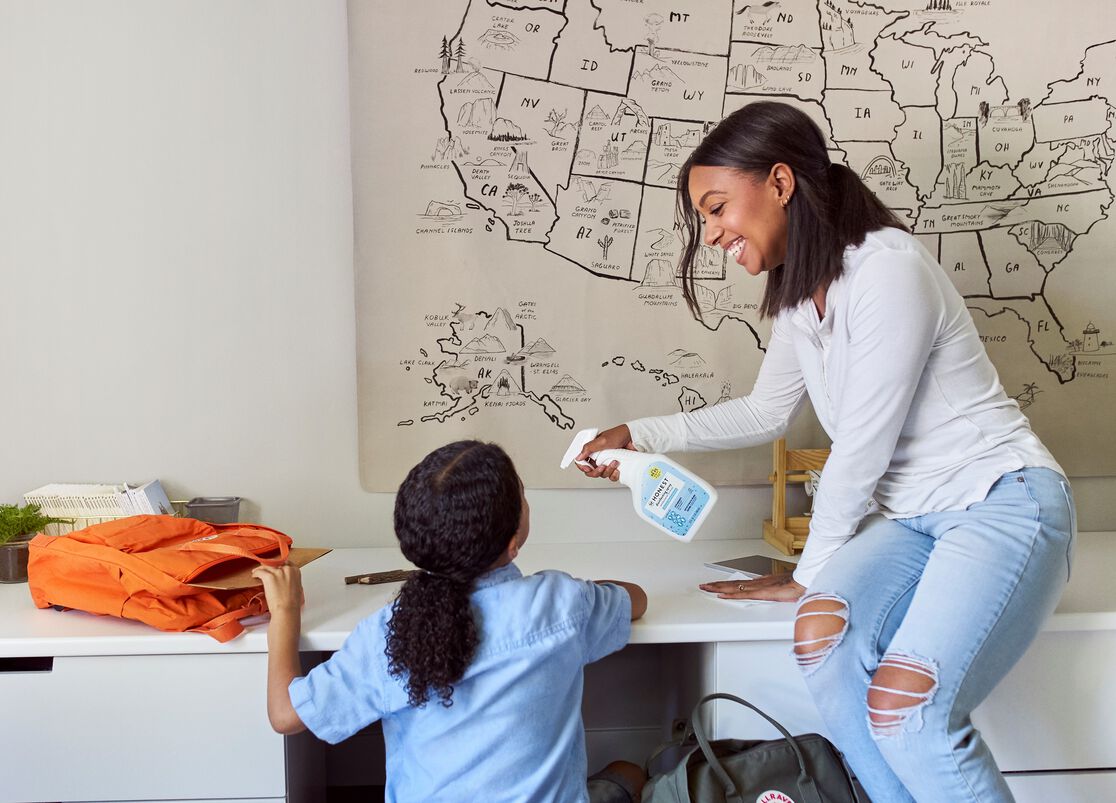Life has been weird for many people in recent months. A global pandemic can have that kind of effect. One of the bigger impacts is the closure of schools because of Covid-19. Now that economies are reopening, that means schools will begin to open too.
There is almost always some generalized anxiety when starting back to school, mixed with a healthy dose of excitement for a new school year (and your new swag, like a convertible backpack!). However, going back to school amidst the massive uncertainties of Covid-19 may require a little more reassurance and guidance, depending upon grade level.
Tips for High Schoolers
If it’s their very first day of high school, encourage them to try not to overthink too much. Freshman year can be hectic and fast-paced even during the best of times, and with a bunch of new Covid-19 guidelines and rules, it may be even more so.
Encourage your high schooler to mentally prepare themselves to just roll with it. If they are not new to high school, reentry may be slightly less challenging, but there’s no doubt the new rules and regulations will take some getting used to for everyone.
The best thing your high schooler can do is follow the instructions their teachers, their school counselor, and school personnel give them when they arrive on campus once school starts.
They will inevitably have state-mandated guidelines in place, such as social distancing measures and hygiene measures. No one is going to like them, but it’s important to follow them if they are going back into face-to-face learning. And it definitely doesn’t hurt to encourage your high-schooler to pack some hand sanitizer or alcohol wipes to stay germ-free.
Some students and parents may elect to do digital learning instead, at least until there is more information and positive news about the Covid-19 spread.
If that’s your high schooler, help them understand that even though they might be doing digital learning, they will still be expected to fulfill their classroom obligations and keep their grades up.
Many high schoolers may not be happy about digital learning, while others might think it’s an answer to prayer. Some students may have already been upset over school closures and the cancelations of high school extracurricular activities and milestones, like prom and graduation ceremonies.
They may harbor worries that this new school year will be the same. Talk it out with your student and role play some worst-case scenarios to help them process their emotions and prepare themselves for a new school year.
If you aren’t sure whether you want your high schooler to go back to school or enroll in a digital learning option instead, remember that every student is different and adjusts differently. Talk with your high schooler before the new year starts and decide together what the best method of school reentry may be for your unique situation. Give them a voice and a choice.
Tips for Middle Schoolers
If your child is a middle schooler, returning to school post Covid-19 can trigger lots of anxious feelings, especially if it’s their first year of middle school. The start of middle school years is an awkward time without having to wear face masks and stay 6 feet away from their fellow students.
Talk to your middle schooler about what will be expected of them as they return to school. Review the safety guidelines for your school together, and make sure your student understands them and agrees to follow them.
Help your middle schooler understand that though things will be different on school campuses, your expectations are not. They should still treat their fellow students with kindness, follow the rules and instructions given to them by their teachers, and work hard on their grades.
If you choose to keep your child home for digital learning, help them understand that even though they are home all day, their schoolwork and online class time is not optional. The best way to set them up for success is to make sure they are clear on what is expected of them in this new way of learning and create a structured schedule that they are to follow each day. Remember that just like with face-to-face learning, consistency in digital learning is key for your student to succeed.
If your student seems to be having trouble adjusting, speak with the school guidance counselor on the next steps. Nothing is normal right now, and that can rock even the healthiest of adults. Your student may benefit from counseling sessions that allow them to talk about and process their feelings with someone they feel safe confiding in.
Tips for Grade Schoolers
This might be the hardest age for the new Covid-19 adjustments that are being required for schools to reopen, especially if they are starting kindergarten. Kids are kids and they don’t fully understand things like keeping 6 feet away from their fellow students, or why they have to wear a mask. If your kiddo is going back to the classroom, be sure to pack hand sanitizer with them. It’s also a good idea to sanitize any surfaces they touch with antibacterial spray (you don’t know what kind of germs they’re bringing home) after they come home each day. The older ones will get it to some degree, but even then it’s a struggle.
Talk with your student extensively about what it will be like when they return to school. Let them ask all the silly questions they want and answer them as honestly and frankly as you can. If they voice fears, alleviate them. If they voice excitement, be excited with them.
If you decide digital learning is better for your child, create a schedule and a structure and stick with it. Make a point to communicate regularly with his teachers and address any problems that arise head-on, before they get bigger and affect your student’s grades and overall performance.
Kicking the School Year Off Right
For face-to-face learning and digital learning, you’ll still need school supplies. If you live in an area where you can go shopping in stores, try to shop early in the morning or late at night when there are fewer people and crowds.
If you don’t want to shop outside your home, you can order pretty much everything you need online. Involve your student in the process and enlist them in helping you to make a school supply list. High schoolers are pretty self-sufficient and can make a list and just give it to you so you can buy what they need, but middle schoolers and grade-schoolers might require some prompting to figure out their lists of necessities.
Some of the basics most students will need to include on their school supplies list:
- Pens
- Pencils
- Notebooks
- Backpack
- Binder
- Folders
- Uniforms
If your student is doing digital learning, you might just need a device and WIFI because most—if not all—class material will be downloaded and submitted online.
General Safety Guidelines to Review with Your Student
Hygiene
Review the tenets of good hand hygiene with your student. Yes, even the high schoolers. Washing their hands frequently with soap and water is important in helping to prevent the spread of germs. Remind them not to touch their faces if they can avoid it, and to wash their hands before doing so when they can’t.
Face Coverings
Cloth face coverings and disposable masks are seen nearly everywhere these days. Most students will have some experiences wearing one because of reopening measures from state to state. Talk to your student about why face coverings are being required right now and review the proper way to wear them. If they are worried about how to look cute in a school uniform or with a mask, there are plenty of cool styles to school from!
Physical Distancing
This is probably one of the hardest rules to enforce with students of all ages. But recommended guidelines are for students to be separated by at least 6 feet when in the same room together, especially in confined spaces like the classroom. However, most kids, even high schoolers, simply don’t think about Covid-19 and remaining 6 feet apart at all times. You might find yourself reminding them frequently.
Temp Checks
Many schools will be requiring temperature checks before being admitted on campus. Make sure your child knows in advance they may be required to have their temperature taken and explain to them why it’s important. Additionally, monitor your child yourself. Any students with temps over 100.4 should stay home, especially if they have symptoms of illness.
What Should You Do the Day Before School Starts?
Encourage your student to enjoy the last day of “summer break.” If they are going to be going back to campus for face-to-face learning, have them get their clothing and school supplies all together the night before, so it’s ready in the morning and there is one less thing to worry about.
If your student plans on taking their lunch, make sure it’s packed and ready. High school students can pack and prep for the day themselves but your middle schoolers and grade-schoolers may need help and/or encouragement.
Make sure morning alarms are set and that everyone goes to bed at a decent hour so they are well-rested come morning.
If your student is starting digital school, prep won’t be that different. They will still have to set their alarm and be ready for their first “live” classroom experience.
Encourage them to enjoy their last night of break because, in the morning, they start their new school year in a Covid-19 world.
We aim to provide you with the most honest and credible information possible. This article was reviewed for accuracy by The Honest Team and was written based on sources that are linked at the bottom of the article.
blog_review_statement




